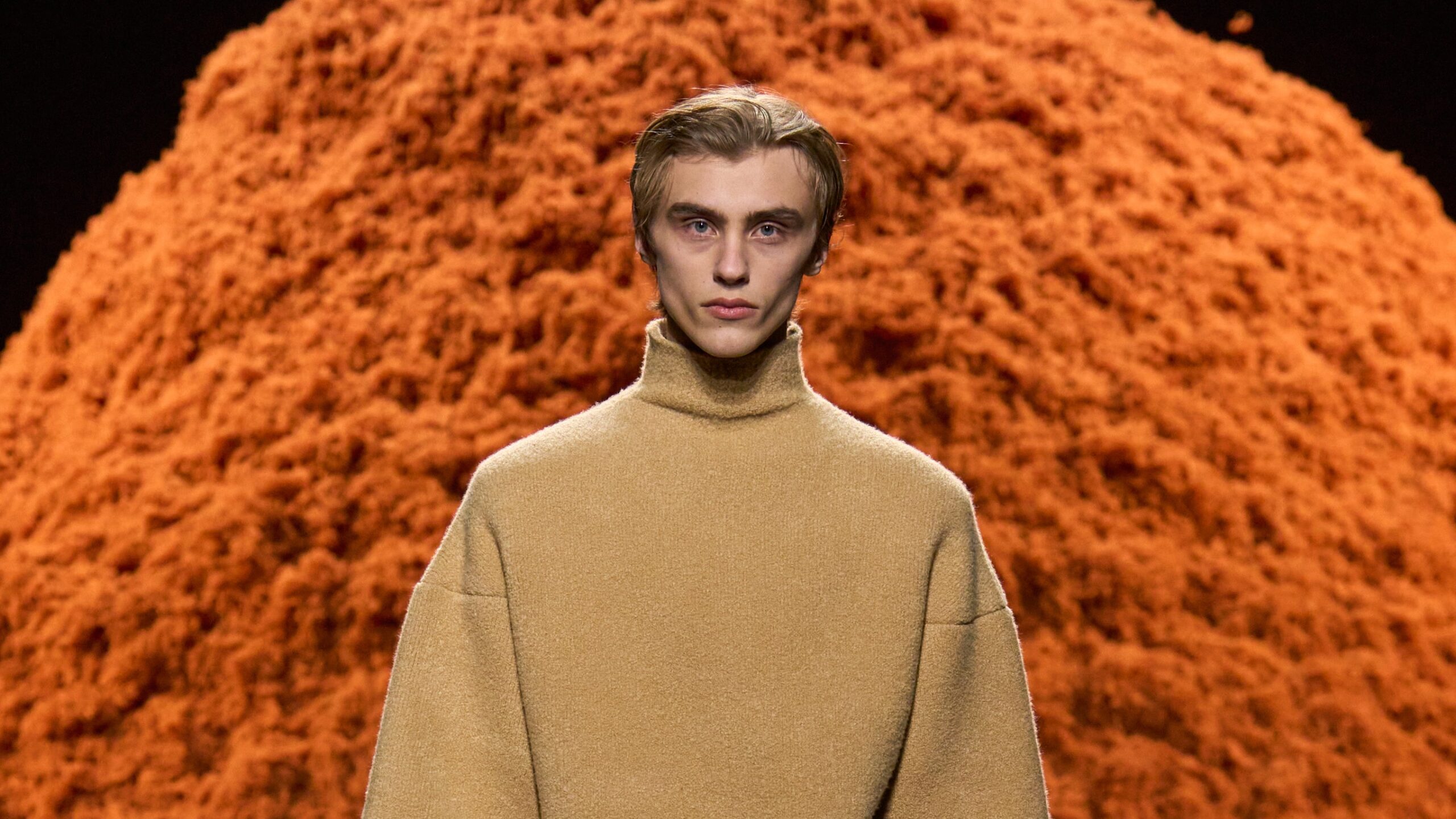Overshirts made with three layers of cashmere. A flocked fronted cashmere silk long sleeved sweater that was bonded within while being on its outside, through some alchemy, robustly water resistant. Rugged but sleek looking boots lined with snuggly shearling that was skin free, thanks to Zegna’s industrial recovery process. A pleated pocketed new chore variation called the “gardeners jacket” that came in raw denim and coral pink Harris tweed. Cropped but wide jacket shapes, occasionally in “fancy” reduced gingham checks. Gorgeous super-long overcoats in melton wool, cut to swathe you like a blanket almost to the ankle. Tops structurally patterned in double-layered laser-cut intarsia leather. Knit jackets in two layers of sandwiched cashmere.
Alessandro Sartori’s Zegna is full of marvelous and innovative clothes. His runway is what the company’s CEO Gildo Zegna describes as an “ideas lab” that informs the wider offer of what is the world’s best-selling exclusively menswear luxury brand (although women are welcome on that runway too). Sartori is currently engaged in a process of sublimation, striving to simplify the algorithm of menswear’s many parts and categories into four fundamental criteria: what he terms “tops, bottoms, underpinnings, accessories.”
Today, Sartori’s models walked around an enormous mound of camel cashmere tufts that grew and grew as more floated down from the ceiling, to mimic the waste-collection (and eventual recycling) process that happens in the Zegna mill in Trivero. To a soundtrack created by James Blake—he sang “in the end it was my friend, that broke my heart”—the models walked their route in looks that were, for the most part, top-to-toe monotone, or only very subtly tonal. This served to define the silhouette finely, and you could see the fruits of Sartori’s efforts to consider silhouette from the side as well as face on.
It would provoke the eye more to occasionally see in these shows fewer samey combinations of Sartori’s beautiful clothing—or at least some looks that combine a more daring mix of color, as well as texture—in order to display to the onlooker the full functionality and versatility of the modal wardrobe he is so passionately working to build. More adventurous contrasts would emphasise definition, thus more robustly field-testing his experiments in future-facing sartorial harmony. Despite this caveat about fashion presentation—one conversationally shared with several of my benchmates—Sartori’s Zegna “ideas lab” showed today that it continues to produce some of the most innovative and thoughtfully radical pieces in the game. It would be interesting to see them played with a little more.
